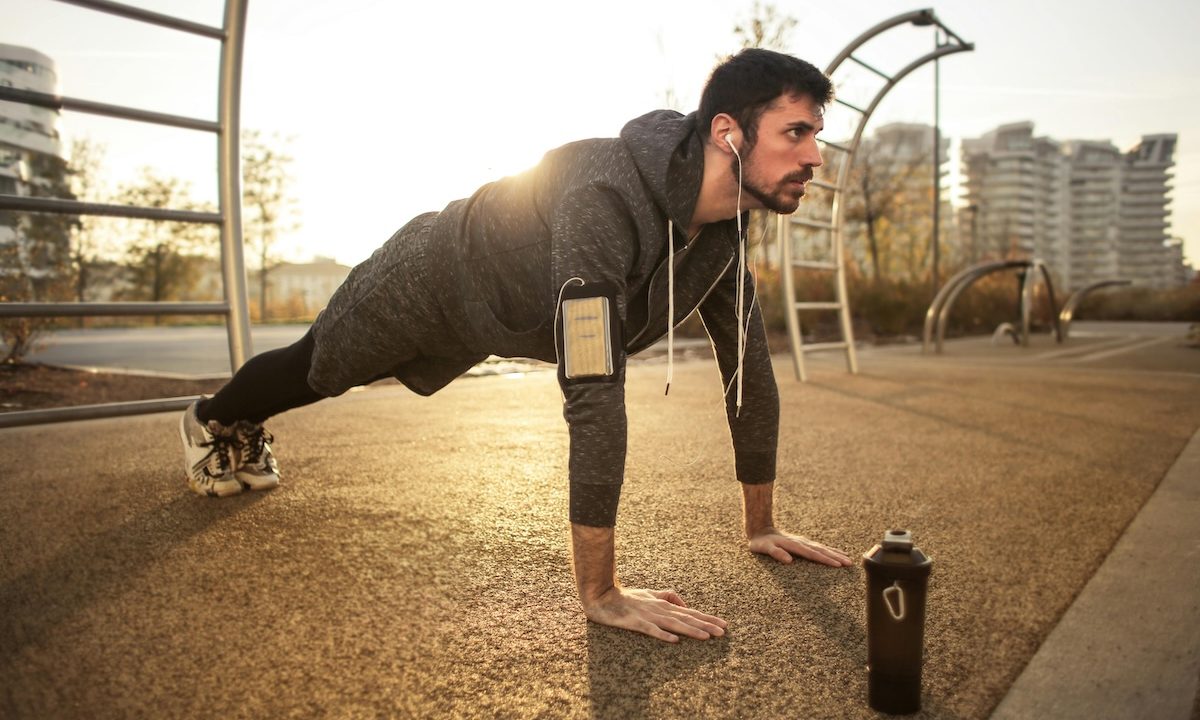
Building arm strength isn’t merely an exercise in vanity. Yes, those ripped bodybuilders on social media may seem “aspirational.” However, having functional upper-body strength and mobility allows us to move through day-to-day tasks like opening doors and reaching out to hug a family member without thinking twice.
Speaking of social media, arm workouts on platforms like Instagram and TikTok often involve muscular gym-goers lifting weights that look so heavy your biceps ache. For one reason or another, these upper-body exercises may not meet you where you are. You might be traveling without access to weights or snowed in without heavy dumbbells at home.
Don’t despair. All you need for a good arm workout is your body. Calisthenics are bodyweight exercises that can build functional — and even aesthetic — strength. Which ones should you choose? Get ready to curl, hold, and (plank) tap your way to more muscular arms with this upper-body-focused calisthenics workout.
Can you build arms with calisthenics?
Yes, you can build arm strength with calisthenics. Even though a calisthenic workout does not involve hand weights, barbells, or kettlebells, the exercises use the body as resistance. Remember, push-ups and planks, often incorporated into strength training routines involving weights, are technically calisthenics.
Since you’re using body weight, consider doing more repetitions or increasing the speed of your exercises. Avoid taking this progression at the expense of good form. Poor form can negate the benefits of an exercise and even lead to injury.

Nail your next arm day with this calisthenics workout for upper-body
No weights? No problem. Grab a mat (or don’t) for these calisthenic exercises that make for mean arm workouts. The only caveat to the no-equipment rule: You’ll need a wall for one.
Wall push-ups
Target: Chest, shoulders, triceps, and upper back
- Place your arms on a wall shoulder-width apart. Then, step back with arms straight and palms flat against the wall. Now, you’ve ensured you are an arms-length from the wall to start.
- Bend at the elbow as you would with a push-up on the floor.
- Stop when your elbows are at a 45-degree angle.
- Push back.
- Repeat 15-20 reps for three sets.
Tricep dips on the floor
Targets: Triceps
- Sit on the ground with your legs bent and out in front of you. The arms should be straight behind the shoulders, palms on the floor, and fingers facing your sit bones.
- Push firmly through the hands as you raise the hips off the ground.
- Hold for a breath.
- Slowly lower back to the ground until your sit bones graze the floor or mat.
- Quickly push back up.
- Repeat 15 to 20 reps three times.
Superman
Targets: Upper back and shoulders
- Lie down with your head on the floor or mat, hands and legs extended straight in front of and behind you.
- Lift the head, keeping the neck in a neutral position, and gaze toward the floor.
- Squeeze shoulder blades together as if trying to hold a marble between them. Lift your arms and legs about six inches off the floor. Pull the belly button toward the spine for a bonus core workout.
- Hold for three breaths.
- Slowly lower back to the starting position.
- Repeat 10 to 15 times for three sets.
Plank taps
Targets: Shoulders and arms
- Assume a high plank position. Ensure hands and feet are shoulder width apart and in line. The wrists, shoulders, feet, and hips should all be in one light.
- Engage the core and keep your hips squared toward the floor as you lift one hand off the ground. Tap the opposite shoulder.
- Return the hand to start.
- Repeat on the other side. That’s one rep.
- Repeat 20 to 25 times for three sets.
Side planks
Targets: Shoulders
- Lie on your left side with your forearm bent. The legs should be stretched out in front of you (To modify a side plank, keep the knees bent at a 90-degree angle).
- Lift the hips off the ground. Hold for 30 to 60 seconds. (To progress this move, try pulsing 10 times.
- Return to start.
- Repeat on the opposite side.
Summary
Resistance training is essential to overall health, helping you build strength and reduce injury risks during cardio and performing day-to-day tasks. While strength training often includes weights, a calisthenics workout might be a better fit for you. Calisthenics only require body weight, so the exercises are ideal for people who lack access to equipment or are recovering from injury and have been instructed to ease back into weight training (get a doctor’s approval before even trying bodyweight workouts, though). Planks, tricep dips, and even bodyweight-only bicep curls are among the moves that can build arm and shoulder strength.





